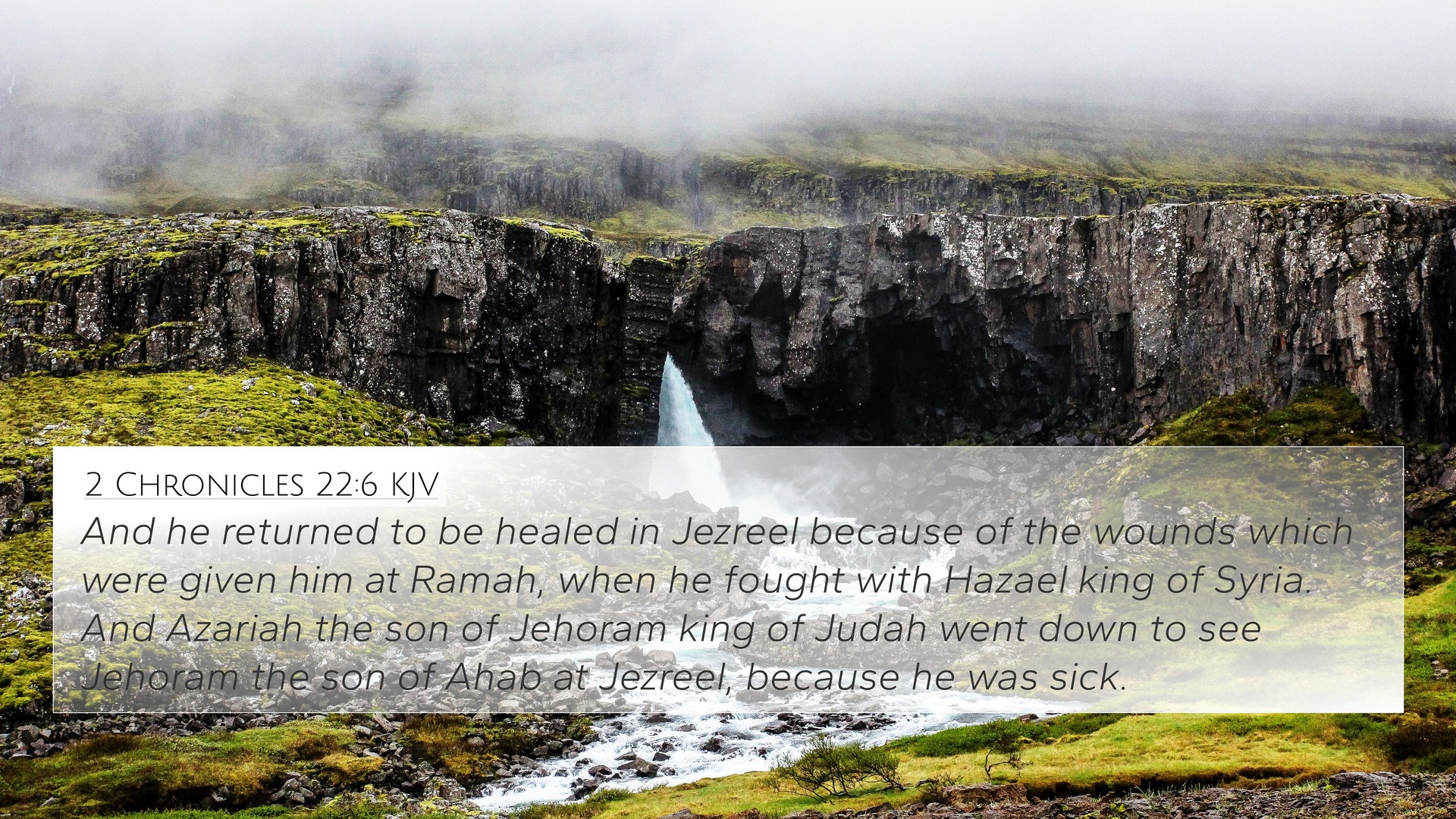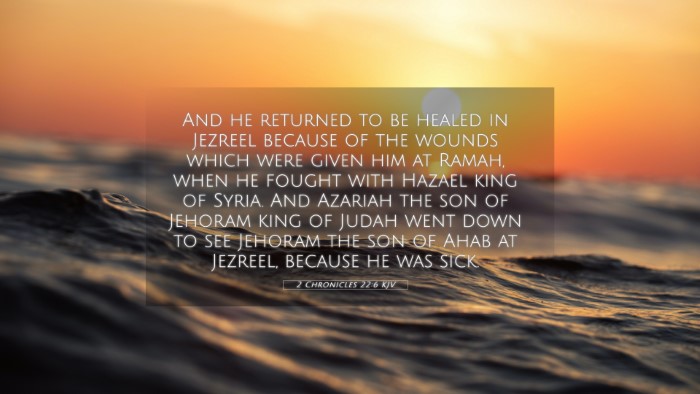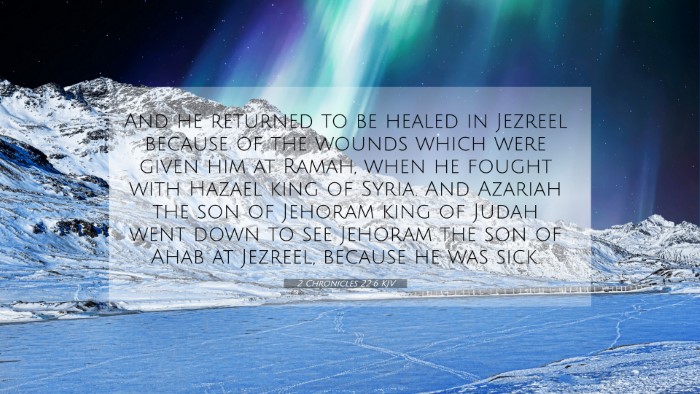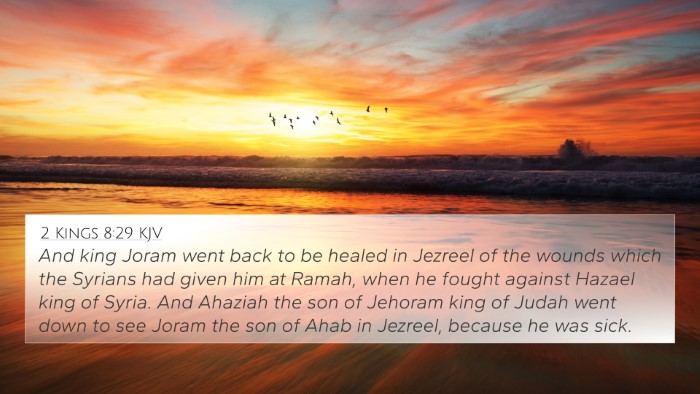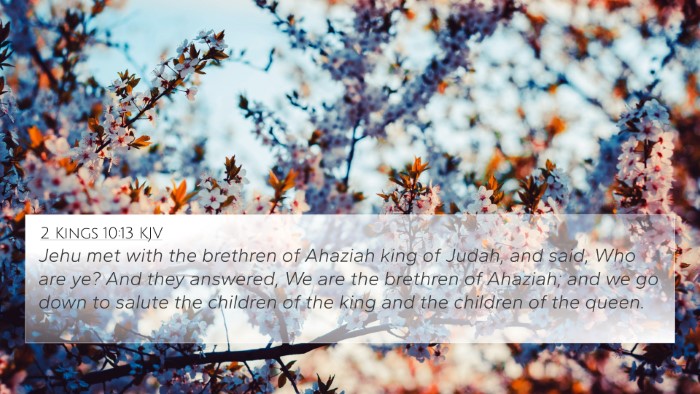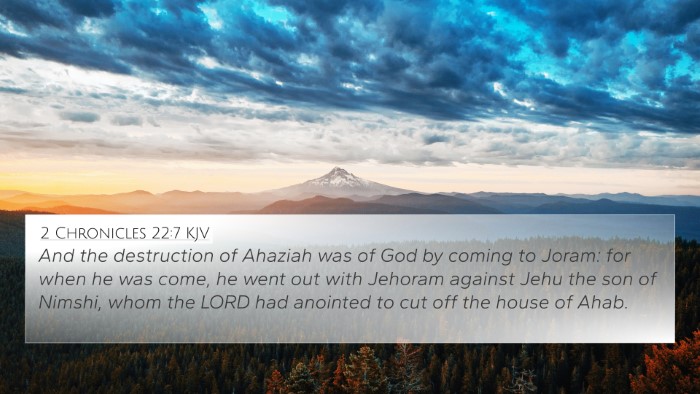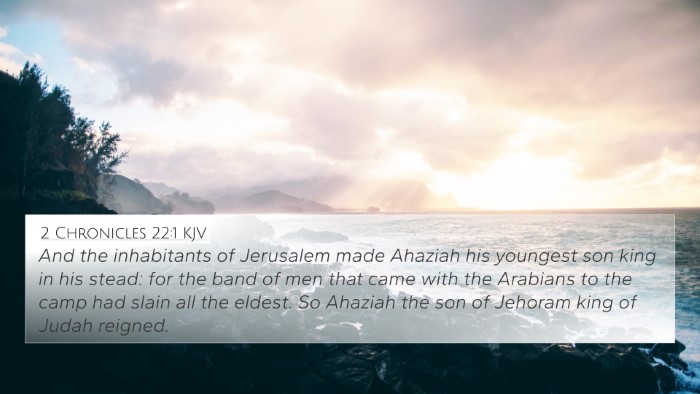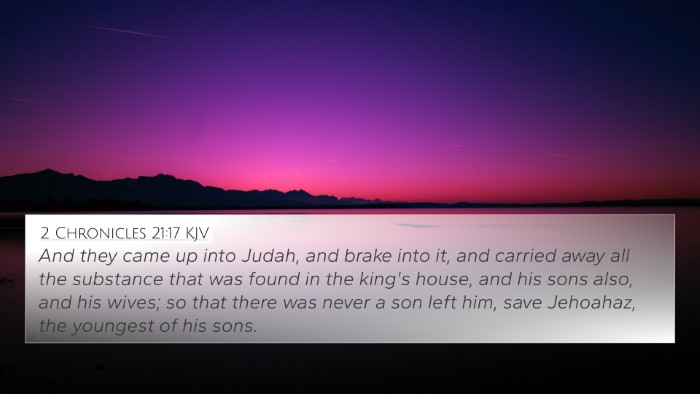Understanding 2 Chronicles 22:6
The verse 2 Chronicles 22:6 recounts a critical moment in the history of Judah, specifically focusing on King Ahaziah and the consequences of his actions guided by his mother, Athaliah. This passage offers significant themes worthy of thorough exploration and interpretation through public domain commentaries.
Verse Text
2 Chronicles 22:6: "And he returned to be healed in Jezreel because of the wounds which he had received at Ramah, when he fought with Hazael king of Syria: and Azariah the son of Jehoham, of the house of Ahaziah, was an officer of the king's council." (KJV)
Summary of Insights
This verse provides insights into the interplay of divine judgment, human decisions, and the fulfillment of God's prophetic words throughout the lineage of David. Below is a summarization of insights from notable public domain commentaries:
Matthew Henry's Commentary
Ahaziah's Fate: Matthew Henry emphasizes that Ahaziah’s injuries signify the consequences of aligning with evil leaders, as he followed the wicked path of his mother, has profound theological implications. His efforts to seek healing reveal a sense of desperation, coupled with a lack of repentance.
Albert Barnes' Notes on the Bible
Historical Context: Barnes contextualizes this verse within the broader historical narrative of the kings of Israel and Judah. The actions of Ahaziah, particularly in his confrontation with Hazael of Syria, were doomed from their inception due to his failure to heed God’s ways. It's a complex web of misunderstanding leading to conflict.
Adam Clarke's Commentary
The Prophetic Connection: Clarke draws attention to the prophetic nature of the events leading to this moment. He highlights how God's foreknowledge guides the narrative, with the unfolding circumstances illustrating God's sovereignty despite human folly.
Thematic Connections
This verse can be linked with several Bible verses that enrich its understanding:
- 2 Kings 8:28-29: Details Ahaziah's relationship with the house of Ahab.
- 1 Kings 22:29-38: The prophecy concerning the judgment of kings.
- 2 Chronicles 21:16-17: The consequences of Jehoram's actions that affected Ahaziah.
- Isaiah 17:1: A prophecy concerning Damascus, connecting to the geopolitical tensions of the time.
- Jeremiah 22:18-19: God's message concerning the fall of the kings of Judah.
- Revelation 16:16: Symbolism of conflict, paralleling the ongoing themes of judgment and restoration.
- Matthew 1:12: Genealogy of Jesus, linking to the successors of Ahaziah and emphasizing God's overarching plan.
Connecting Biblical Themes
2 Chronicles 22:6 serves as an important junction connecting various theological themes, such as:
- Divine Sovereignty: The narrative underscores God's control over events, guiding history despite human decisions.
- Judgment and Mercy: Ahaziah's plight reflects the tension between divine judgment and the mercy offered even amidst rebellion.
- Legacy of Kings: The behaviors of past leaders inform the trajectory of Judah, showing how one generation's actions affect the next.
- Faith and Healing: The quest for healing symbolizes a longing for restoration and forgiveness often overlooked in times of prosperity.
Cross-Referencing Biblical Texts
The richness of scripture allows for deep exploration through cross-referencing. Here are tools and methods to aid in this study:
- Utilize a Bible concordance for thematic searches.
- Engage in cross-reference Bible study to draw parallels with other key verses.
- Adopt a Bible cross-reference guide to connect verses based on thematic content or character studies.
- Employ resources like Bible reference resources to find similar themes across both Testaments.
Conclusion
In examining 2 Chronicles 22:6, one uncovers vital lessons about the consequences of rejecting God’s guidance, the interplay of deceit and righteousness, and the far-reaching impact of familial legacies. Through comparative verse analysis and thematic connections, there is a deeper understanding of how scripture interrelates, providing profound reflections for both individual and community faith journeys.
